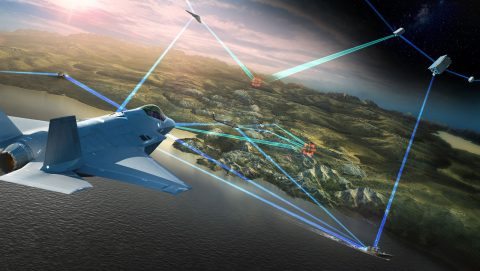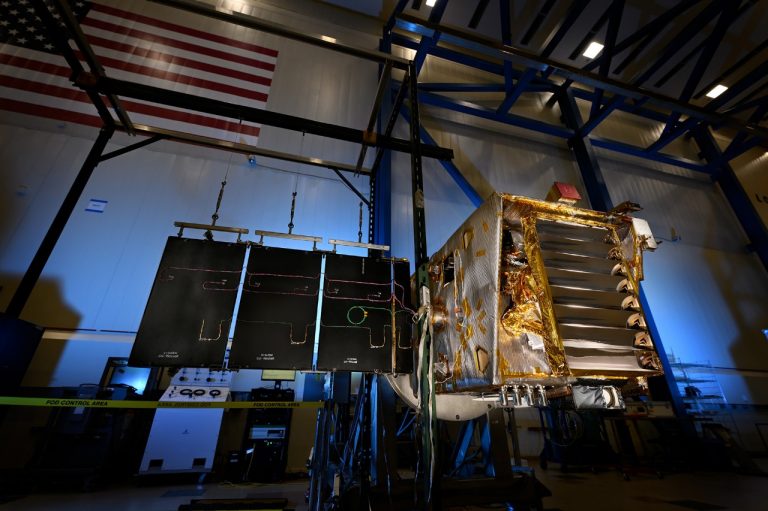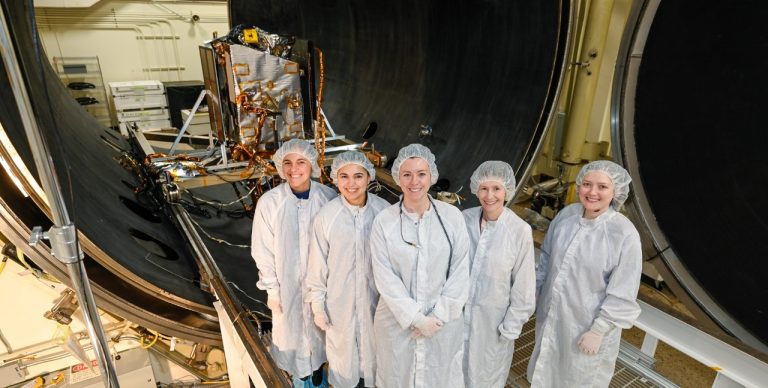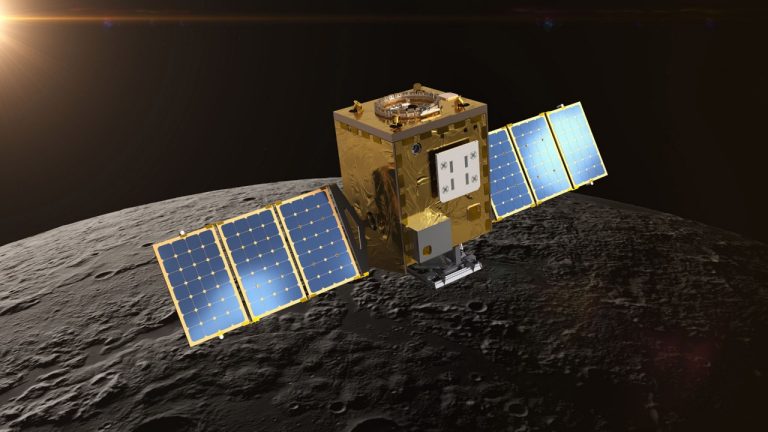NASA’s Lunar Trailblazer Moon Mission Ends
Aug. 4, 2025 — NASA’s Lunar Trailblazer mission ended on July 31 after losing contact shortly after its February 26 launch. Designed to map and study water on the Moon, the mission aimed to support future exploration and advance planetary science. While it didn’t reach its destination, its technologies will contribute to future missions.
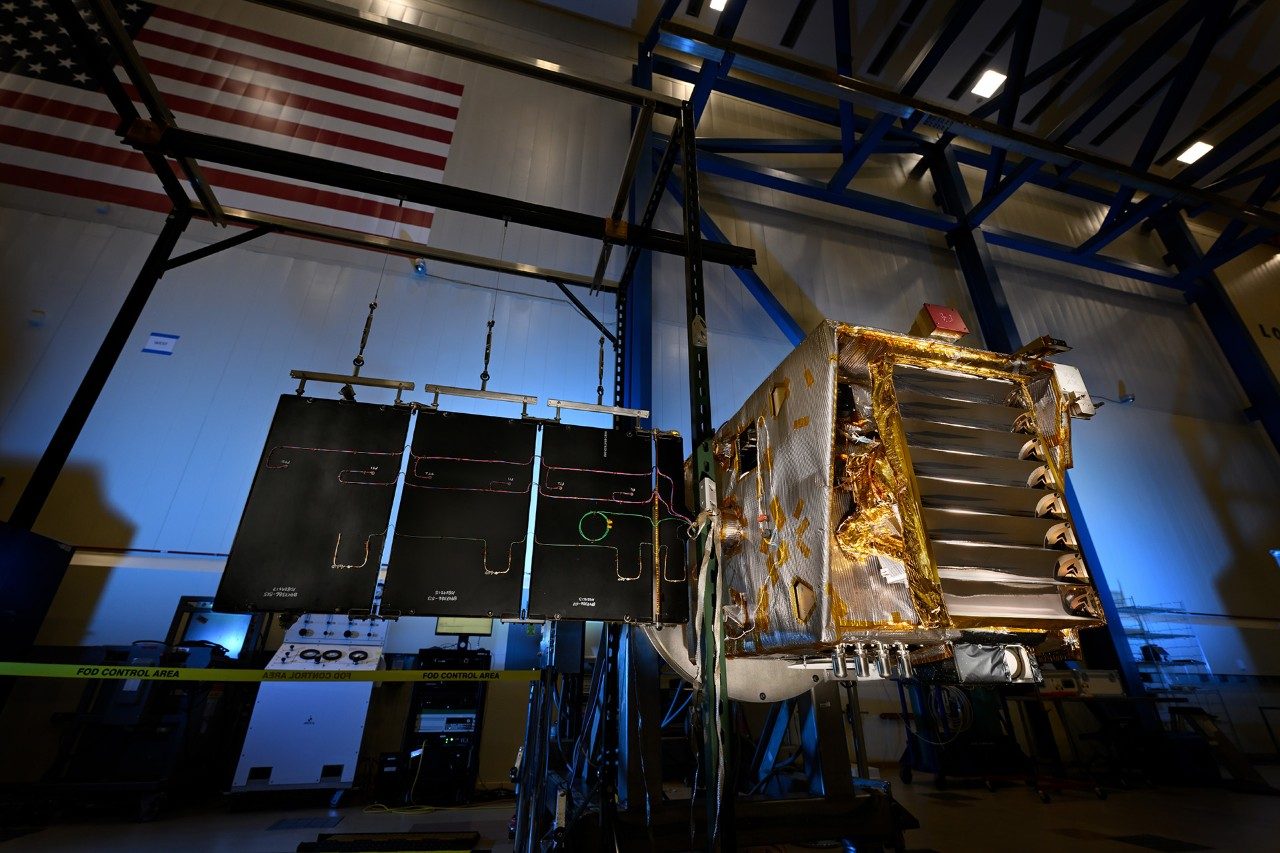
Forging a path for humans to safely return to the Moon, thanks to a detailed study of lunar water.
Building block of future lunar economy
Mapping critical lunar water deposits
Novel and scalable spacecraft architecture
Small, but fit for a complex mission
Looking for Water on the Moon
Lunar Trailblazer will measure the form, abundance and distribution of water and hydroxyl (a water molecule minus one part hydrogen) on – and make high-resolution maps of various regions of – the lunar surface. This mapping of water on the Moon could help NASA better identify future Moon landing sites for humans (on missions like Artemis) and discover new clues about the delivery of water and other materials to the Earth-Moon system over time.
The Lunar Trailblazer spacecraft bus began development at Lockheed Martin in 2020 and is set for a rideshare launch with IM-2 in early 2025. Lockheed Martin designed and is building and integrating Lunar Trailblazer under contract with Caltech. Lunar Trailblazer is led by Caltech principal investigator, Bethany Ehlmann, and the project is managed by NASA's Jet Propulsion Laboratory.
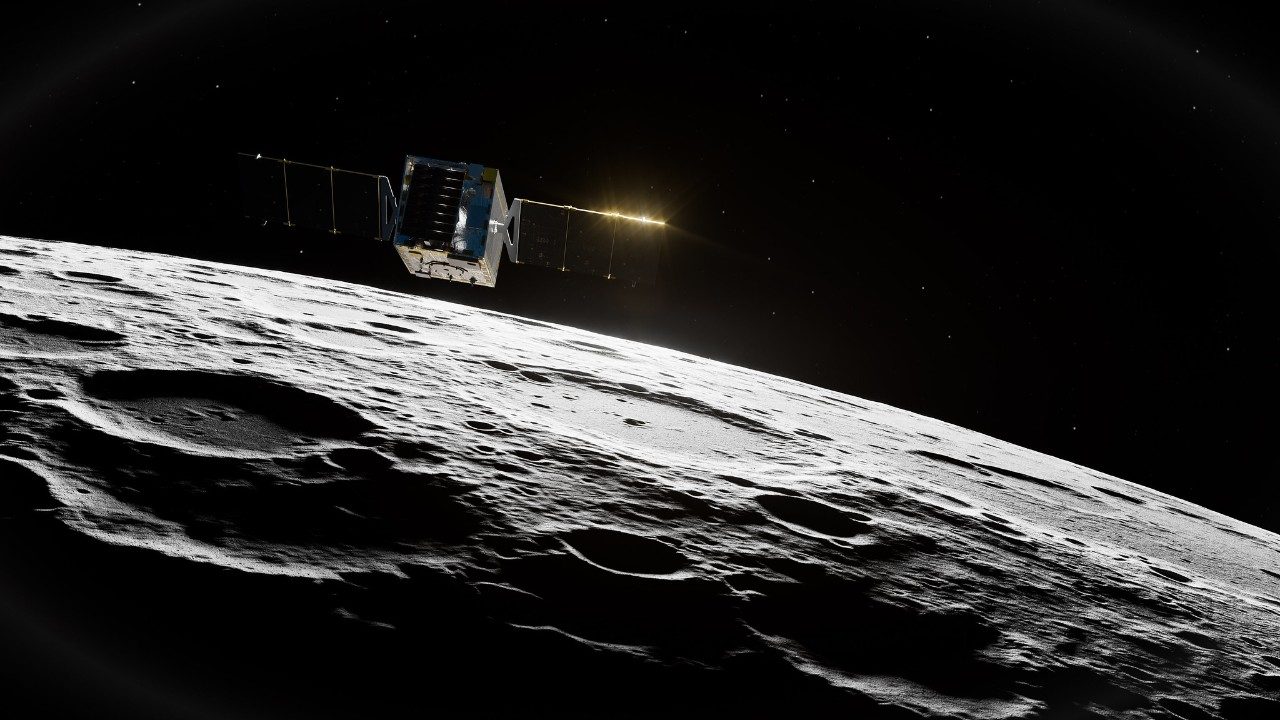
Small But Fit for a Complex Mission
Lunar Trailblazer is part of NASA’s Small, Innovative Missions for Planetary Exploration (SIMPLEx) mission class. SIMPLEx missions are those that use small spacecraft for exploration. Lunar Trailblazer is approximately 450 pounds. They go to space by hitching a ride on existing launches.
Lunar Trailblazer utilizes Lockheed Martin’s new Curio platform – a novel and scalable deep space SmallSat spacecraft architecture that allows the deep space exploration community to investigate scientific questions at less cost. The foundational architecture is also customizable to be able to meet a specific mission’s needs.
The spacecraft also builds on Lockheed Martin’s strong heritage in deep space exploration missions. Lunar Trailblazer’s guidance, navigation and propulsion systems are modeled after NASA’s successful GRAIL mission to the Moon. GRAIL’s two spacecraft – designed and built by Lockheed Martin – used a hydrazine propulsion system that allowed them to achieve the needed thrust at the needed mass.
.jpg.pc-adaptive.full.medium.jpg)
The Future Lunar Economy
For humans to go back to the Moon and stay there, we need resources and a system to access them: a full-scale lunar economy. The water Lunar Trailblazer will map on the Moon’s surface may become a critical building block of this specialized space economy. In an ideal future state, humans will be able to both drink the Moon’s water and use its hydrogen and oxygen atoms for fuel.
Lockheed Martin has developed a vision of how this lunar economy could be developed. We call it a Water-Based Lunar Architecture.



